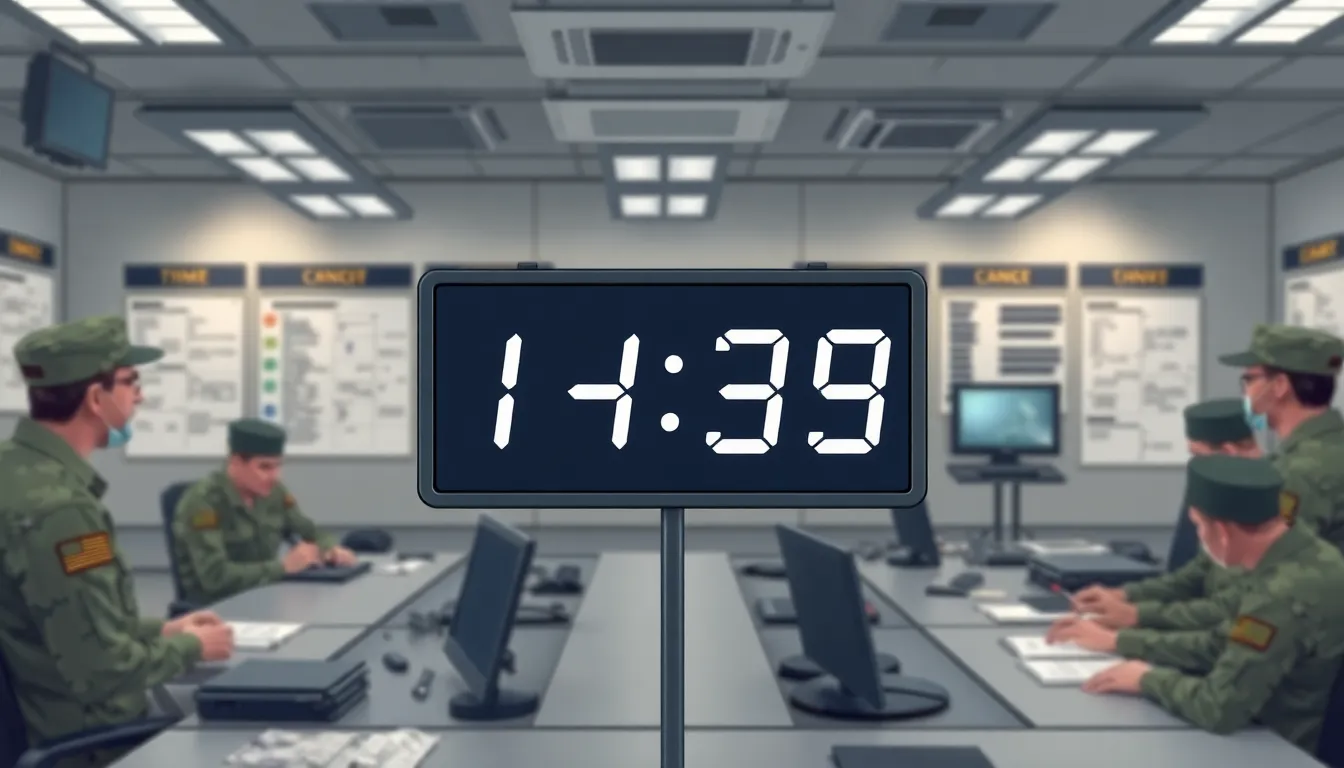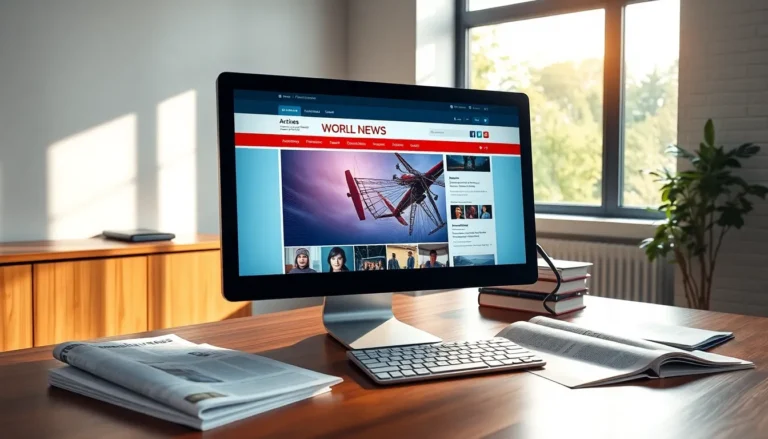Table of Contents
ToggleWhen the clock strikes 19:30, some might wonder if they’ve stumbled into a sci-fi movie or a military briefing. But fear not! This isn’t a secret code; it’s simply the 24-hour format that keeps the world ticking smoothly. Understanding military time can be a game-changer, especially if you’re planning a trip abroad or trying to impress your friends with your newfound knowledge.
Understanding Military Time
Military time uses a 24-hour format, differing from the 12-hour system. Each hour ranges from 00 to 23, making it straightforward to understand. The transition from standard time to military time is simple: subtract 12 from any hour after noon. For example, 19:30 translates to 7:30 PM in standard time.
Travelers benefit significantly from grasping military time, especially when navigating train or flight schedules. Many countries utilize this format, eliminating AM and PM confusions. Familiarity adds a layer of convenience, allowing for quick conversions and averting mix-ups during critical situations.
Recognizing the hours can enhance communication in both civilian and military environments. Events often schedule using military time, requiring workers and attendees to be proficient. Some fields, like healthcare, emphasize accuracy, as timing can impact patient care.
Learning military time encourages focus on precision, a valuable skill in daily tasks. Daily routines may rely on time management, making this knowledge essential. It’s efficient and promotes clarity in scheduling and appointments. Furthermore, using military time can impress peers, showcasing an understanding of global practices.
Embracing military time may lead to fewer misunderstandings and better time management. The clarity it offers can streamline events and interactions. Understanding the format empowers individuals to communicate effectively while staying punctually aware of their commitments.
What Is 19:30 Military Time?

19:30 military time refers to a specific point in the 24-hour clock format. This time is equivalent to 7:30 PM in standard time.
Conversion from Standard Time
Converting 19:30 to the standard 12-hour format is straightforward. One simply subtracts 12 from the hour. In this case, 19 minus 12 equals 7. The result indicates 7:30 PM. This method works effectively for any hour after noon. Knowing this conversion enhances clarity when discussing events scheduled using military time. Familiarity with the conversion can ease communication for travelers in time-sensitive situations.
Usage in Different Contexts
19:30 finds frequent use in various settings, including military, healthcare, and transportation. Many military operations utilize this format for precision timing. In healthcare, accurate timing is critical for medication administration and patient care. Transportation schedules, like trains and flights, often display times in military format to avoid confusion. Using 19:30 helps ensure everyone understands the intended schedule. Embracing military time can significantly boost effective communication in these contexts.
Benefits of Using Military Time
Adopting military time offers significant advantages. It enhances clarity and precision in communication, particularly in scheduling.
Clarity and Precision
Clear understanding of time becomes easier with military time. It eliminates the ambiguity associated with AM and PM distinctions. For instance, 19:30 clearly indicates the hour corresponding to 7:30 PM. In professional settings, clarity helps prevent misunderstandings among team members. Precise timing is essential for effective coordination, especially during crucial operations in industries such as healthcare and transportation. Utilizing military time promotes a unified approach to scheduling, allowing individuals to focus on their tasks without uncertainty.
Avoiding Confusion
Militarized time successfully minimizes confusion in time management. Travelers often rely on this format to interpret timetables accurately. When trains or flights use military time, passengers can instantly identify departure and arrival times. Avoiding the common pitfalls of standard time notation streamlines planning. Individuals engaged in various fields, from the military to healthcare, benefit from the straightforward nature of this system. Simplifying time recognition fosters a more organized environment, reducing the likelihood of missed appointments or critical deadlines.
Common Misconceptions About Military Time
Understanding military time can lead to a clearer grasp of timekeeping, yet several misconceptions persist. Many people believe that military time is only for the military. In reality, industries like healthcare, aviation, and public transportation widely adopt the 24-hour format for accuracy.
Myths and Facts
Some assume military time is complicated, but it’s actually straightforward. For instance, 19:30 simply translates to 7:30 PM. Others think military time is exclusively used in specific countries. Contrary to this belief, many regions, including parts of Europe and Asia, implement the 24-hour format seamlessly in everyday life.
Differences Across Countries
Usage of military time varies around the globe. In Europe, for example, public transport schedules typically use this format, while many Americans stick to standard time. Countries like Japan embrace military time in professional settings, reducing confusion in scheduling. Overall, understanding these differences enhances communication and helps individuals navigate time-related tasks efficiently.
Understanding military time like 19:30 can significantly enhance one’s ability to navigate schedules with ease. By adopting this format, individuals can eliminate confusion and improve communication in various settings. Whether in travel, healthcare, or everyday life, recognizing the benefits of military time fosters clarity and precision.
This straightforward approach to time management not only streamlines daily routines but also empowers individuals to stay punctual. As more people become familiar with military time, the advantages of this system will continue to grow, making it a valuable skill in an increasingly fast-paced world. Embracing military time can transform how one interacts with time, leading to more effective coordination and fewer misunderstandings.




